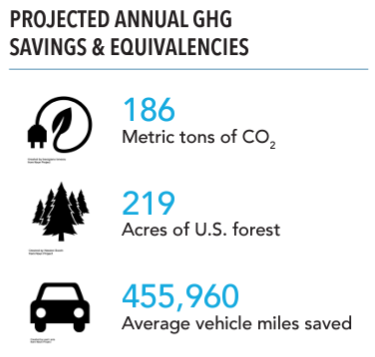CASE STUDY: SOMA STUDIO & FAMILY APARTMENTS
LIWP helps TNDC electrify the SOMA community, saving costs and contributing to California’s sustainability goals
San Francisco, CA | 88 SRO studios and 74 family units | Built in 2003
The Tenderloin Neighborhood Development Corporation (TNDC) helps people thrive in San Francisco by building affordable homes, offering services that support well-being, and amplifying the voice of the communities they serve. TNDC is rooted in the Tenderloin, but works across seven neighborhoods, including SOMA. TNDC prioritized resident needs and benefits as part of energy work completed at its SOMA Studio and Family Apartments. Built in 2003, SOMA provides 162 homes with more than 60% of its households classified as extremely low-income (earning less than 30% of the Area Median Income). With the Low Income Weatherization Program (LIWP) for Multifamily, TNDC electrified key major central building systems while promoting resident benefits and helping meet the state’s goals to decarbonize and reduce greenhouse gas (GHG) emissions in buildings.
TNDC kept costs low by co-leveraging other Energy Efficiency (EE) programs which LIWP managed on the back-end as a single point of contact. Without LIWP, the project scope would have been limited to lighting upgrades, but instead, TNDC was able to take a whole-building approach and broaden the scope to integrate various electrification measures as part of the stand-alone energy retrofit.
TNDC has committed to reducing carbon emissions by 50% by 2028 compared to a 2018 baseline, and building electrification and decarbonization are key strategies for meeting this goal. Further, SOMA gets 100% clean electricity through Clean Power SF’s Clean Power Super Green program, making the Scope 2 emissions for the site zero.
Electrifying the SOMA community
With LIWP technical support, TNDC was guided through available technologies and solutions to undertake its first existing-building electrification project. Ruchi Shah, Senior Sustainability Manager at TNDC, says, “When we started this project, LIWP was the only program that funded electrification and fuel-switching measures. They provided an exhaustive list of measures and more importantly, their team spent three to four months coming up with preliminary pricing to help identify a contractor, an offering no other energy program has provided.”
TNDC, like several other affordable housing developers, has highlighted the need for flexibility and robust technical assistance (TA) with the state’s move towards electrifying end uses. LIWP phased in the incentive payments which gave TNDC flexibility and helped them maintain cash flow.


